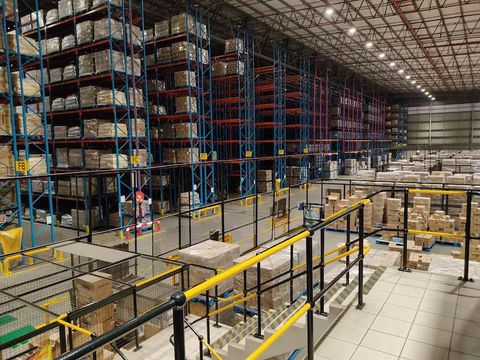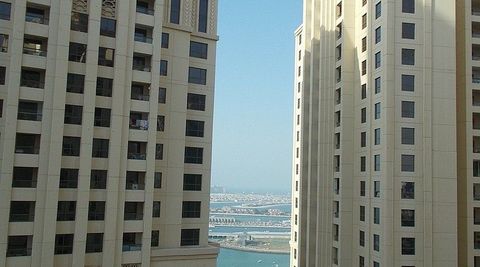Understanding Glass Manufacturing: Learn Core Methods, Technical Details, and Expert Advice
Glass manufacturing refers to the scientific and industrial process of converting raw materials—such as silica sand, limestone, soda ash, and various additives—into solid, transparent, and durable glass products. The foundation of this process is the transformation of minerals under extremely high temperatures, followed by controlled shaping, cooling, and finishing.
Glass exists because societies have long needed a material that is transparent, stable, chemically resistant, and adaptable. Its origins date back thousands of years, but modern manufacturing techniques allow industries to produce glass with precise optical, mechanical, and thermal characteristics. Today, glass is essential for architecture, transportation, renewable energy, medical equipment, electronics, and packaging.
Importance: Why Glass Manufacturing Matters Today
Glass holds an important role across multiple sectors, and its manufacturing directly affects industries, professionals, and daily life.
Who it impacts:
-
Construction and infrastructure developers
-
Automotive and transportation designers
-
Renewable energy engineers
-
Electronics and semiconductor manufacturers
-
Healthcare and laboratory sectors
-
Packaging and container production industries
Why it matters:
-
Energy efficiency: Modern glass technologies improve insulation in buildings and reduce energy consumption.
-
Safety and reliability: Tempered and laminated glass increase structural strength and user protection.
-
Environmental importance: Glass is recyclable and reusable, supporting sustainability strategies and reducing raw-material extraction.
-
Innovation in technology: Optical glass, fiber optics, and display glass support communication networks, smartphones, and precision instruments.
-
Food and product integrity: Glass containers provide chemical stability and preserve the purity of consumables.
Glass manufacturing solves specific problems such as durability in extreme environments, transparency for visibility and illumination, and precision for scientific applications. Its versatility also allows it to be shaped into sheets, fibers, containers, coatings, and advanced composites.
Recent Updates: Trends and Notable Changes from the Past Year
The glass industry has seen measurable advances and shifts during the past year, driven by research, sustainability efforts, automation, and global policy changes.
Key developments observed during 2024–2025 include:
-
Renewable-energy glass growth (2024): Increased demand for solar photovoltaic panels has boosted production of low-iron and high-transparency glass designed for solar applications.
-
Improved recycling technologies (2024–2025): Multiple facilities introduced upgraded cullet-sorting systems using AI-based optical scanners, improving recycling efficiency and reducing the environmental footprint of manufacturing.
-
Smart glass adoption (2025): Electrochromic and thermochromic glass gained wider use in smart buildings, helping reduce heat gain and supporting energy-efficient construction.
-
Automation and robotics integration (2024): Automated batch mixing, furnace monitoring, and forming-line robots have improved consistency and reduced operational errors.
-
Lightweight automotive glass (2024): Vehicle manufacturers continued transitioning toward thinner, stronger laminated glass to enhance fuel efficiency and electric-vehicle range.
Laws or Policies: Regulations That Influence Glass Manufacturing
Glass manufacturing is affected by environmental rules, safety standards, and materials-handling regulations. These policies ensure that production maintains safety, air-quality, and sustainability performance.
Common regulatory areas include:
-
Environmental emission limits: Many countries require strict control of particulate matter, nitrogen oxides, sulfur oxides, and carbon emissions from melting furnaces.
-
Energy-efficiency mandates: Industrial furnaces often fall under national or regional energy-management rules requiring optimized fuel use and heat-recovery systems.
-
Material-handling regulations: Silica sand and other materials must be stored and transported according to dust-control and worker-safety standards.
-
Glass safety standards: Building codes define the use of tempered, laminated, or insulated glass in doors, windows, facades, railings, and glazing systems.
-
Recycling and waste-management rules: Cullet processing and furnace feed must comply with national waste-handling guidelines.
Below is a simple table summarizing common regulatory focus areas:
| Regulatory Area | Purpose | Typical Requirements |
|---|---|---|
| Emission Control | Reduce pollution | Furnace monitoring, filtration, continuous emissions data |
| Worker Safety | Protect employees | PPE use, ventilation, silica-dust control |
| Energy Standards | Improve efficiency | Furnace optimization and heat-recovery systems |
| Product Safety | Ensure glass performance | Impact resistance, fire-safety and glazing standards |
Tools and Resources: Helpful Guides, Calculators, and Platforms
A range of tools and resources support understanding, operating, and studying glass manufacturing.
Educational and technical resources:
-
Industry association portals providing manufacturing research and glass-property databases
-
Online material-science libraries with details on thermal expansion, optical clarity, and annealing behavior
-
E-learning platforms offering glass-processing fundamentals
Quality-control and design tools:
-
Batch-calculation software for raw-material composition adjustments
-
Furnace-monitoring dashboards for temperature and pressure trends
-
Simulation tools that predict molten-glass flow and viscosity
-
Thickness measurement tools used for float glass and laminated products
-
Stress-analysis apps for heat-treated and tempered glass
Sustainability and environmental tools:
-
Life-cycle assessment calculators
-
Energy-consumption tracking systems for melting furnaces
-
Recycling-impact analysis templates
Technical data sheets often include:
-
Density, thermal expansion, softening point, viscosity curves
-
UV, visible, and IR transmittance graphs
-
Strength and impact-resistance tables
Below is an example of a typical glass-property table:
| Property | Standard Float Glass | Tempered Glass |
|---|---|---|
| Density | ~2.5 g/cm³ | ~2.5 g/cm³ |
| Softening Point | ~720°C | ~720°C |
| Surface Strength | Moderate | High (due to compression layer) |
| Impact Resistance | Standard | 4–5× higher |
FAQs
What are the main stages of glass manufacturing?
The process generally includes batch mixing, melting, refining, conditioning, forming, annealing, and inspection. Each stage ensures that raw materials melt correctly, impurities are removed, and the final product has consistent mechanical and optical properties.
Why is annealing necessary in glass production?
Annealing removes internal stresses formed during cooling. Without it, glass may fracture even under minor temperature changes or pressure variations.
What types of glass are commonly used today?
Common categories include float glass, tempered glass, laminated glass, borosilicate glass, insulating glass units, fiber glass, optical glass, and specialty coatings designed for UV control, thermal insulation, or reflective performance.
Can glass be fully recycled?
Yes, glass is fully recyclable and can be reused repeatedly without quality loss. Recycled glass, known as cullet, reduces furnace temperatures and lowers energy consumption.
How does modern glass differ from traditional glass?
Today’s glass benefits from precise raw-material control, advanced furnace technologies, improved chemical additives, and treatments that enhance strength, thermal performance, and clarity. Innovations such as low-emissivity coatings, smart glass, and solar-grade glass were not available in earlier manufacturing eras.
Conclusion
Glass manufacturing remains a fundamental industry that supports architecture, technology, healthcare, energy production, and transportation. Its evolution over centuries has transformed it from a handcrafted material into a highly engineered product designed with precision and performance in mind.
Recent developments—including recycling improvements, automation, smart-glass adoption, and specialized materials for solar and electronics—show how active and innovative the field has become. Regulations continue to guide environmental responsibility and product safety, while digital tools help researchers, engineers, and manufacturers work more efficiently.





